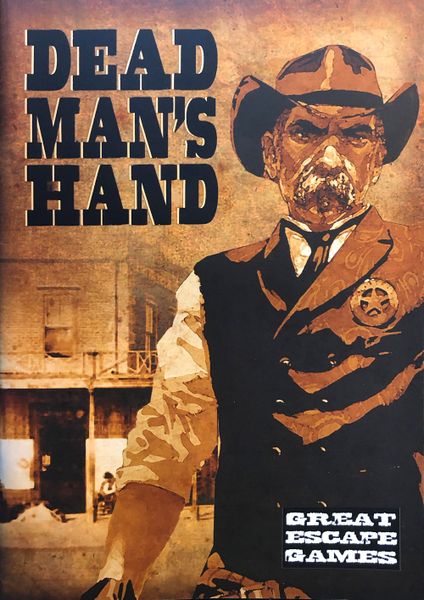Dead Man’s Hand (2013) Board Game
Dead Man’s Hand is a tabletop miniatures game set in the American Wild West. It was designed by Stuart McCorquodale and Mark Wheatley and released in in 2013. The game captures the essence of gunfights and skirmishes in the lawless frontier of the 19th century American West. Players take on the roles of various factions, such as outlaws, lawmen, and desperados, and engage in strategic battles to claim dominance in the rugged terrain.
Game Components of Dead Man’s Hand
How To Setup Dead Man’s Hand
To set up Dead Man’s Hand, players begin by preparing the gaming area, typically a 3′ x 3′ or 3′ x 4′ board, with plenty of scenery such as buildings, boardwalks, and street scatter. Each player selects a gang (Lawmen, Cowboys, Outlaws, or Desperados) and chooses their models, ensuring the total reputation points of the gang do not exceed the scenario limits. Players shuffle their custom deck of cards and deal an initial hand based on the scenario. The remainder of the cards form the deck used during the game.
Gameplay Mechanics and Game Objective
Player Experience
Players of Dead Man’s Hand often describe the game as fun, fast-paced, and easy to learn. The game’s use of a custom deck of cards adds a dynamic element, making each game unique. The gameplay is cinematic, evoking the feel of Hollywood Westerns, and the scenarios are designed to be played as standalone or part of a larger storyline.
Pros
Cons
Personal Thoughts on Dead Man’s Hand
Dead Man’s Hand is ideal for those who enjoy skirmish games, particularly those with a Western theme. It is a great introduction for beginners due to its simple and intuitive rules. The game’s fast-paced nature and high replayability make it appealing for both casual and experienced gamers. However, players who prefer a clean and minimal setup might find the card mechanic and table markers somewhat inconvenient.
We are supported by our audience. When you purchase through links on our site, we may earn an affiliate commission, at no extra cost for you. Learn more.

